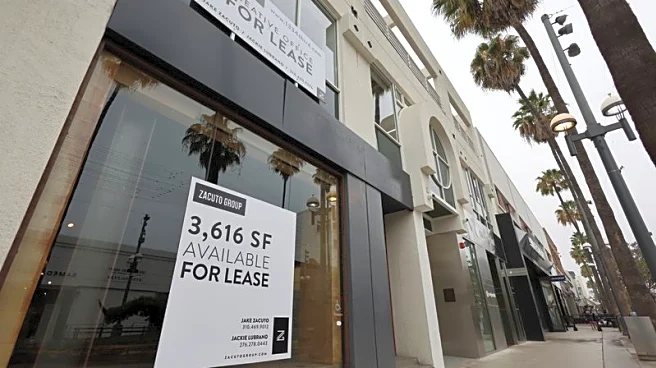What's Happening?
Despite two interest rate cuts by the Federal Reserve this year, 30-year fixed mortgage rates remain above 6%, a level they have maintained since February 2023. Currently, the average rate is 6.37%, according
to Mortgage News Daily. This rate is higher than what 40% of potential homebuyers consider comfortable for purchasing a home, as per a Bankrate survey from early 2025. Mortgage rates are closely tied to long-term Treasury yields rather than the Fed's benchmark interest rate. The spread between mortgage rates and 10-year U.S. Treasury yields, which serves as a benchmark for mortgage pricing, has been between 2 and 3 percentage points and is currently around 2.12%. This spread remains wider than usual, contributing to elevated mortgage rates.
Why It's Important?
The persistence of high mortgage rates has significant implications for the housing market and potential homebuyers. Elevated rates can deter home purchases, affecting the real estate market's growth and stability. The spread between mortgage rates and Treasury yields is influenced by factors such as inflation, tariffs, government shutdowns, and the federal deficit, which have led investors to demand higher returns on long-term U.S. debt. As mortgage rates track the 10-year Treasury yield, these elevated yields have kept rates high despite Federal Reserve actions. This situation impacts affordability and could slow down the housing market recovery.
What's Next?
For mortgage rates to decrease to around 5.5%, the 10-year Treasury yield would need to drop to approximately 3.5%, assuming the spread remains at 2%. However, current forecasts do not reflect this scenario. The Mortgage Bankers Association predicts rates will be 6.4% by the end of 2026, while the National Association of Home Builders and National Association of Realtors forecast averages of 6.23% and 6% respectively. Fannie Mae projects a rate of 5.9% by the end of 2026. These predictions suggest that mortgage rates will remain relatively high in the near future.












